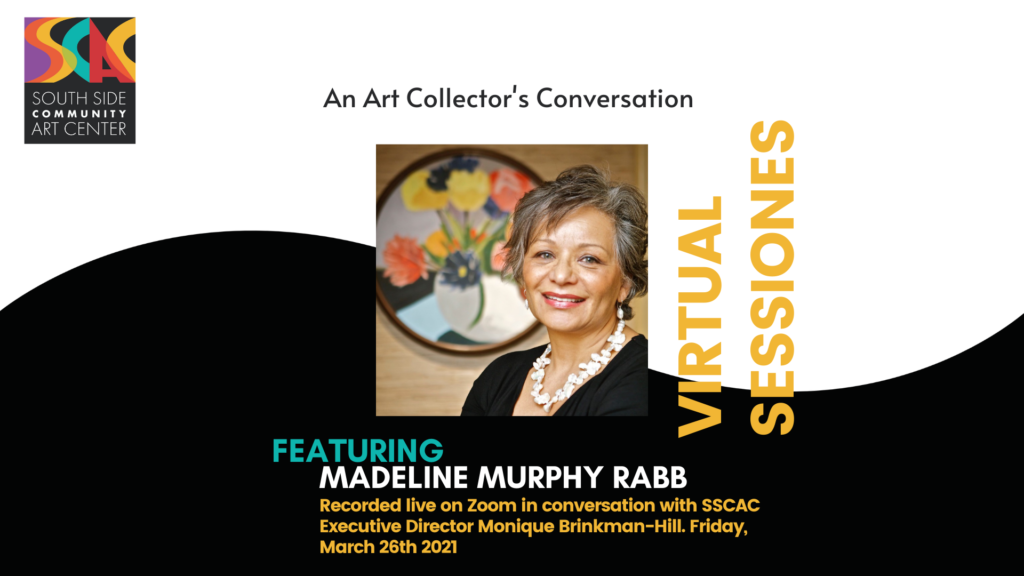If you missed our talk with Madeline, please watch the video below.
In honor of Women’s History Month, Executive Director of SSCAC, Monique Brinkman-Hill will be in conversation with Madeline Murphy Rabb to discuss her career in art collecting, arts consulting, and cultural advocacy work here in Chicago and beyond. With over 50 years of experience, Madeline will share her accomplishments, as well as challenges navigating the art world.

Madeline Murphy Rabb has been actively participating in the art world for more than 50 years as a painter and printmaker, arts administrator, jewelry designer, art appraiser, art consultant, collector, curatorial activist and writer.
Madeline earned a Bachelor of Arts Degree in painting from the Maryland Institute College of Art in 1966 and a Master of Science Degree in printmaking from the Illinois Institute of Technology in 1975. In 1983, Madeline was appointed by Mayor Harold Washington the Executive Director of the Chicago Office of Fine Arts, Department of Cultural Affairs where she served under Mayors Eugene Sawyer and Richard M. Daley until 1991. She oversaw the Public Art Program and awarded CityArts grants to artists and arts organizations throughout the city.

In 1992 she created Murphy Rabb Inc. a business focused on advising collectors about building African American art collections for their offices and homes. Over the years she has opened her home for private tours of her collection to the Art Institute of Chicago, the Museum of Contemporary Art, the Southside Community Art Center and Art Expo. She has lent works from her collection to exhibitions at the Minneapolis Institute of Art, the Wadsworth Atheneum, The Studio Museum in Harlem, The Baltimore Museum of Art, Camden Art Center, London, Exhibitions USA, The Newark Museum of Art, The Museum of Contemporary Art, The Los Angeles Museum of Art, and the Indianapolis Museum of Art.
Some of her corporate clients include: Ariel Capital Management, Brown Capital Management, Channing Capital Management, Northern Trust Chicago South Financial Center, Cityfront Place, Northwestern Memorial Hospital, Harris Bank, personal and Trust, Evanston Hospital, Mercy Hospital, UBM Construction Management, the MacArthur Foundation, Draper and Kramer, the Chicago Park District, the University of Chicago, Department of History, Shorebank, the Parking Spot and Capri Capital Advisors.
She has served on the board of Arts Midwest, the Joseph Jefferson Committee, the Hyde Park Art Center, the Southside Community Art Center, the DuSable Museum, the Alumni Board of the Maryland Institute College of Art, the Museum of Contemporary Art Woman’s Board and Sculpture Chicago. For 21 years she served on the Board of Columbia College Chicago, and for more than 30 years has served on the Woman’s Board of the Art Institute of Chicago.




